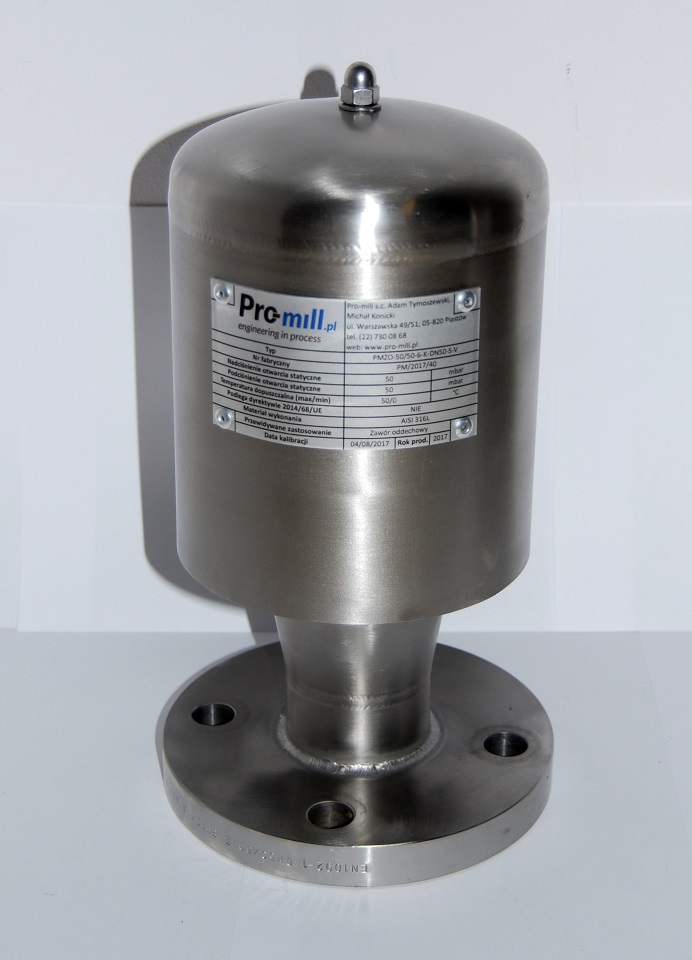AKTUALNOŚCI
14
Breathing valves are devices protecting non-pressure tanks against their bursting caused by exceeding the allowable overpressure or negative pressure. They are installed on breathing connections at the tops of tanks and on buffer connections.

There are two types of breathing valves:
- Overpressure valves – discharge excess gas to the outside of the tank, which prevents an explosion;
- Vacuum competition – replenish the gas shortage inside the tank, preventing an implosion;
They can be made as double-acting or single-acting valves.
Breathing filters are used to protect the contents of the tanks. In the food, pharmaceutical and biotechnological industries, the sterilizing class respiratory filter plays the most important role, which not only constitutes a mechanical barrier, but also protects the contents of the tank against microbiological contamination. Such a filter should be periodically sterilized.

Breathing valves are most often installed in a set with breathing filters. Such a set of devices ensures air-tight sealing of the tank, maintains the appropriate pressure in it and protects the tank against the ingress of various types of dirt or bacteria. Breathing filters also protect against the emission of vapors from the inside of the tank. It is especially important when there are products in the tank that are toxic to the environment or simply bothersome, with an unpleasant odor.

